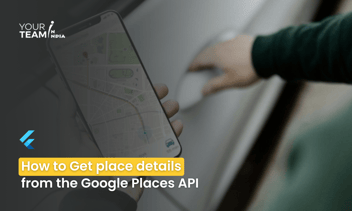Quick Summary: Embark on a journey into efficient Flutter app development with our article on "Bloc State Management in Flutter." Delve into the principles of Bloc architecture, unlocking a robust framework for managing application state. Discover how this approach enhances code organization, maintainability, and scalability, empowering developers to create responsive and dynamic Flutter applications.
Introduction
Flutter stands as a widely recognized cross-platform framework, proficient in constructing applications across mobile, web, and desktop domains. Its reputation is grounded in expeditious development cycles, a pliable and expressive user interface, and performance akin to native applications.
Amidst the process of constructing Flutter applications, a noteworthy hurdle emerges in the form of state management. The app's state denotes mutable data, encompassing elements like the prevailing user location, the inventory of items within a shopping cart, or the score within a gaming context. Multiple methodologies exist for addressing the intricacies of state management in Flutter applications, among which the employment of the BLoC pattern stands as a prominently embraced strategy.
What is BLoC?
BLoC stands for Business Logic Component. It is a state management pattern that separates the business logic from the user interface in Flutter applications. This makes it easier to manage and maintain the state of your app, and it also makes your code more modular and reusable.
The BLoC pattern consists of three main parts:
- Events: These are the inputs to the BLoC. They represent user actions or changes in the state of the app.
- States: These are the outputs of the BLoC. They represent the current state of the app.
- Logic: This is the code that connects the events and states. It is responsible for updating the state of the app in response to events.
The events and states are typically represented by Dart classes. The logic is typically implemented in a single class called the BLoC.
How BLoC Functions:
The BLoC pattern offers an intelligent strategy for managing states within Flutter applications. It effectively divides the functional aspect of the application from its visual representation. This division simplifies the management of diverse application states and facilitates the reuse of code across multiple contexts.
Events:
Within the BLoC pattern, events function as the equivalent of switches. They resemble remote controls that users operate, signaling changes in the application's status.
States:
States function as snapshots of the application captured at distinct moments. They provide a visual representation of what the application displays to the user.
Logic:
The crux of the BLoC pattern lies in its logic component. This underlying mechanism acts as a conductor, linking events with states. It ensures that when users engage with the interface, such as pressing buttons, the application responds appropriately by displaying the correct content.
Example:
- Create a new Dart file for your BLoC logic, let's call it bloc_example.dart:
- In your Flutter widget file, import the necessary packages and implement the UI:
Conclusion
BLoC is a Flutter pattern that manages app state. It separates business logic from the user interface for modular and maintainable code. Its three parts - Events, States, and Logic - handle user actions and app state. BLoC manages information flow with events and states, making code easier to understand. It helps developers write clear and concise code for various devices.
Ready to elevate your Flutter app design? Unlock the full potential of Flutter layouts with our professional Flutter developers.









